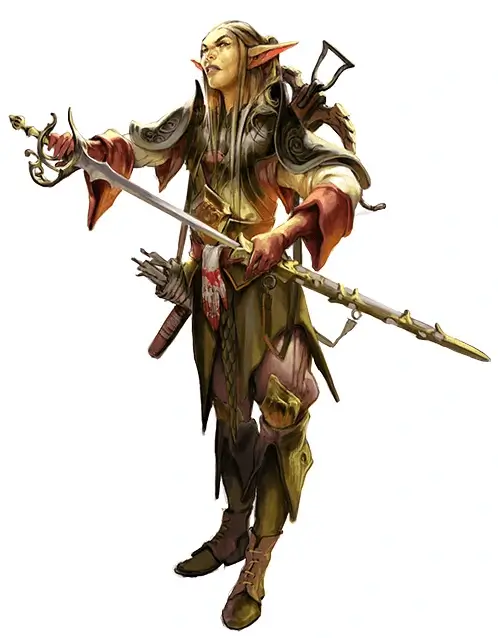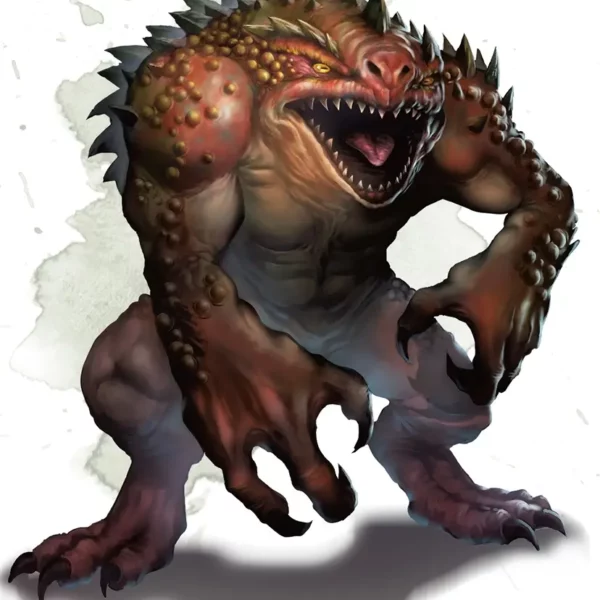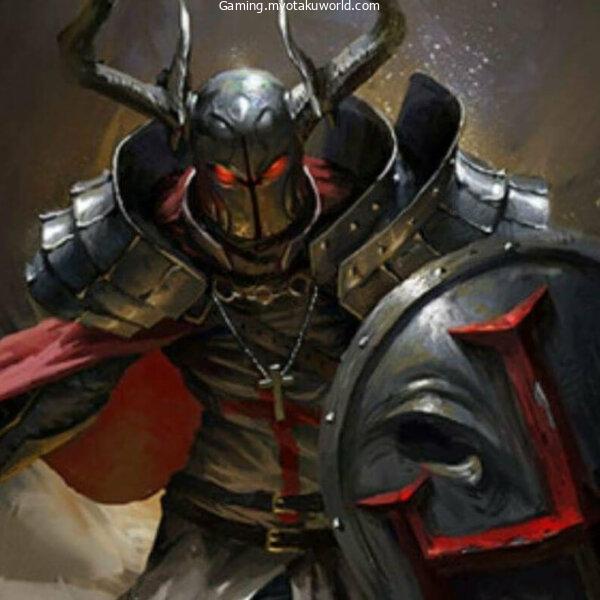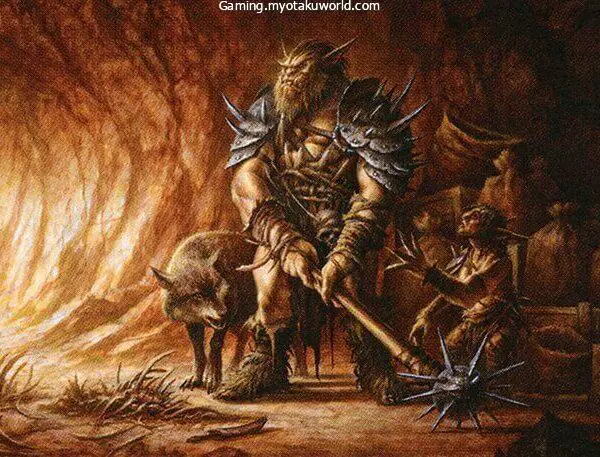Rogues come in many different sizes and shapes, and they have become a mainstay of RPG games.
The class has become a part of their identity, with archetypes and even stereotypes starting to show up. These people are experts at being sneaky, killing people, and stealing.
I’ve used all of the base Rogue sub classes from the books that are available. I tried out a few of the sub classes in D&D’s public beta test, Unearthed Arcana.
I’ve had to play with and against hundreds of Rogues over the past ten years, and I’ve learned how to play with and around them.
This Swashbuckler 5e Guide will talk about the Swashbuckler subclass of the Rogue class.
Let’s get to it.
What is Swashbuckler?
Rogues get their skills by training and learning how to fight quickly and effectively. You might have learned on the streets or from a dark guild.
When it comes to spying, these people can do anything.
| Level 3 | Fancy Footwork |
| Level 3 | Rakish Audacity |
| Level 9 | Panache |
| Level 13 | Elegant Maneuver |
| Level 17 | Master Duelist |
These skills are all about moving around and using Sneak Attack to strike quickly. This Subclass has a lot of style and special moves, just like the Dread Pirate Roberts or Zorro.
This class is like Eldritch Knights and Bladesingers in that it goes against what people expect.
They do great work both by themselves and in small groups. While keeping their power in large groups even through small fights.
This Subclass is very good at getting into and getting out of fights. Swashbucklers can get in and out of fights with ease. Taking little damage and making enemies not want to attack.
Subclass Features
Let’s look at what it is about this Subclass that makes it so popular.

Fancy Footwork
When you learn the Swashbuckler subclass, you get this. So at level 3, you know how to attack and get away without being attacked back.
If you attack a creature with a melee attack on your turn, that creature can’t attack you with an opportunity attack for the rest of the turn.
This skill doesn’t have a cooldown, so if you attack more than one enemy at once, none of them can attack you back. Yes, “attempt” means that they can’t make an opportunity attack against you even if you miss the Attack.
It’s a great way to get in and fix problems before moving to a safer place. It even lets you hide or run as part of your bonus action as a Rogue’s Cunning Action.
Rakish Audacity
At level 3, you also get. With this ability, your Charisma modifier can be added to your Initiative rolls. Also, you can use your Sneak Attack in a new way.
To use Sneak Attack, you don’t need an advantage on your attack roll as long as these conditions are met.
- You are 5 feet away from the creature you want to sneak attack.
- Nobody else is within five feet of you.
- You don’t have a bad roll when you attack.
- All of the different rules for Sneak Attack still apply.
This is a two-for-one feature, so at level 3, you get all of these abilities in addition to the boost to Sneak Attack. This almost proves that rogues get stronger when they reach level 3.
With more initiative, you can start a fight sooner. You might be able to get rid of an opponent if a surprise round comes up.
The new way to use Sneak Attack goes well with the other way. Most of the time, going first means going in alone and trying to kill or get out alone.
Panache
Level 9: Learned. This ability makes you even more charming. You can make a Wisdom (Insight) check against your Charisma (Persuasion) check as an action. The creature must be able to hear you and understand what you say.
If you pass the check and the creature is hostile to you, it has a disadvantage when attacking other targets and can’t attack other targets as an opportunity against you.
This effect lasts for 1 minute or until a friend of yours attacks or casts a spell on the creature. If you and the target are more than 60 feet apart, the effect also goes away.
If you pass the check and the creature doesn’t want to hurt you, you charm it for one minute. Even though it’s been charmed, it sees you as a friend. If you or your allies do something bad to it, this effect ends right away.
This is a hard-to-explain skill, so let’s break it up into three parts.
Breakdown
First, there is the trigger condition. If you try to pass the check against the creature, you have to roll against it. The person you want to talk to must know a language you both know. This doesn’t have to be “Common,” but any language you both know.
Many monsters in D&D are smart and can speak their own language. However, some of them can also learn other languages. It also needs to be able to listen. If you don’t, you can’t make them see anything.
Once these conditions are met, you roll to see if you can beat the roll of the target. If you won, the effect will depend on whether or not the creature was already against you.
If it doesn’t like you, it can only attack you when it has the chance. Then, it has a disadvantage when attacking your allies. This effect lasts for one minute or ten rounds in battle.
It also breaks if one of your allies attacks or casts a spell at the target. If you and the target are more than 60 feet apart, this effect goes away.
Since the creature knows it is under the effect of Panache, it will try to get rid of it as soon as it can. It might try to get hit by your allies or run away to stop the effect.
The non-hostile effect of Panache is called a charm effect. So creatures that have been charmed are willing to help you. You can get them to help you at their own risk after making an extra Persuasion roll. This is a great way to get information or stay out of trouble.
Since it doesn’t have a cooldown and can be used more than once per fight, you can use it more than once if you want.
Unlike other charm effects, when this one ends, the target will not be hostile towards you. So, you can do this as much as you want outside of battle.
Elegant Maneuver

Starting at level 13. You can use a bonus action on your turn to get an advantage on the next Dexterity (Acrobatics) or Strength (Athletics) check you make during the same turn.
This is used for parkour or grappling, which is a creative skill that is limited by your rolls and imagination. This can help you make a dramatic entrance or a thrilling exit.
Since Charges don’t stop you, you can keep moving around the battlefield as long as you have a bonus action left over.
Master Duelist
At level 17, you’ve gotten good at using your sword, which means you can turn failure into success in battle.
If you miss an attack roll, you can try it again, but this time you will have an advantage. Once you do that, you can’t use this feature again until you finish a short or long rest.
When used right, this skill can change how a fight goes. As you land a fatal blow against essential enemies. In a game with odds and dice rolls, the ability to reroll an attack is very useful.
It turns on your Sneak Attack right away because you have an advantage. At this level, your chances of hitting are pretty good, so unless you roll two low dice in a row, this should hit or even critical.
Interactions
As this Subclass has a lot of abilities that are hard to understand. There would be a lot of situations that need to be made clear, but here are the ones I see most often.
Fancy Footwork only works when it’s your turn and only when it’s your turn. This means that if you walked away before it was your turn. As a Held action or reaction, it might make you vulnerable to an attack.
Your Charisma and Dexterity modifiers are added to your Initiative roll when you use Rakish Audacity. You are now almost twice as fast as you used to be.
If you really want to take the most initiative. This works well with the Alert feat, which gives you an extra 5 to initiative.
The part of Rakish Audacity about movement works for all kinds of movement. Try to think in three dimensions if you can fly or swim. The Sneak Attack addition, on the other hand, doesn’t work if you are close to a friend.
So keep them close to the enemy or keep the enemy away from them. There won’t be many times when it can’t be used with this Subclass.
Let’s say that panache is one of the skills that helps you talk to people. When it comes to Fey ancestry and resistance to charms, it does have an effect.
But since it’s not a “Saving Throw” but a “contested roll,” it usually rolls a 1, unless they are immune or have a bonus to checks. Unlike spells that charm, they don’t know what was done to them when the effect is over.
Only that they were taken in for that short amount of time. This means that they were in love with you for a short time, but then they got over it.
Master Duelist is slowed down by the fact that advantages and disadvantages cancel each other out. If you were rolling with disadvantage and missed, you would make a flat roll instead of a roll with advantage.
Most of the everyday things you will do in D&D will fall into these categories. Now let’s talk about how to build your Swashbuckler.
Builds

You can go all-in on rogue, of course, and reach level 20. Which gives you the most damage with Sneak Attack, the ability to hide, and Stroke of Luck.
Together, these things make you a formidable opponent in battle.
But if you’re looking for other classes that go well with Swashbuckler, you might want to try.
Here are a few things you might like.
Fighter
You can get a subclass after getting up to three levels in it. If you put your money in one level. You get a way to fight that matches your swashbuckling (two-weapon fighting comes to mind).
If you have two levels in Fighter, you get Action Surge, which could be useful if you miss a lot.
Battle Master (for Maneuvers) or Champion (for Crit Fishing) are good Fighter subclasses for this build.
Battle Master gives you more control over the battlefield, letting you move your enemies and allies around and disarm or knock people down like a pirate.
On the other hand, Champion is usually good for a martial class if you want to land more critical hits.
Ranger
Since you want to get the level 3 subclass feature as soon as possible, this takes a little more work. Getting spells is a nice bonus, but your main goal is to get the level 3 fighting style and features.
The Fey Wanderer and the Swarmkeeper would be good choices. You could make a case for Gloomstalker, but I don’t think it’s worth it unless your character already has Darkvision.
In more detail. Fey wanderers get a bonus on their Charisma checks and more damage from attacks like Sneak Attack that only hit one target.
This is all at level 3! As long as you hit with a melee attack, Swarmkeepers will get different bonuses.
Their spells are also very good, with spells like faerie fire and mage hand. Aside from the dark vision, Gloomstalker’s benefits only last for the first turn.
So I’d say it’s better for an Assassin than a Swashbuckler, but it’s still a big bonus.
Warlock
You could also choose the Warlock class, but you would need to get 7 levels in it instead of 3. This is so that you can cast higher-level spells and have access to more invocations.
At level 7, you can get four invocations and spells of the 4th level.
Hexblade is the right choice for this. It gives you more powerful spells and makes your attacks better.
You take Pact of the Blade at level 3 because it lets you use Eldritch Smite and other useful invocations later on.
As for Races

Anything works, but races that give bonuses to Dexterity or Charisma work best in this case.
Here are a few examples:
- Aarakocra: (Dex +2, Wis +1) they have an innate fly speed and move quite fast in comparison.
- Drow: (Dex +2, Cha+1) They have Darkvision and innate spell casting but have trouble seeing in sunlight.
- Halfling, Lightfoot: (Dex +2, Cha +1) natural Lucky mixed in with easy access to stealth makes you quite a rogue to contend with.
- Tabaxi: (Dex +2, Cha +1) they have high movement speed paired with natural stealth makes them seem made for the class.
- Tiefling: (Cha +2, Dex +1) this is a specific bloodline of Tieflings, so be sure your DM is ok with it first. It makes for the stealthy suave kind of Swashbuckler.
Feats
Should be thought about when we talk about building. You want feats that give you more attacks or make your defense stronger.
- Fighting Initiate (allows you to choose a fighting style without classing into Fighter)
- Defensive Duelist (increases your AC if you are using a Finesse Weapon
- Piercer/Slasher (functionally the same depending on weapon type)
- Fey Touched (boosts your charisma and lets you have spells to boot)
If you put points into Dexterity and Charisma, you can build a full Swashbuckler.
Have fun and good luck!









